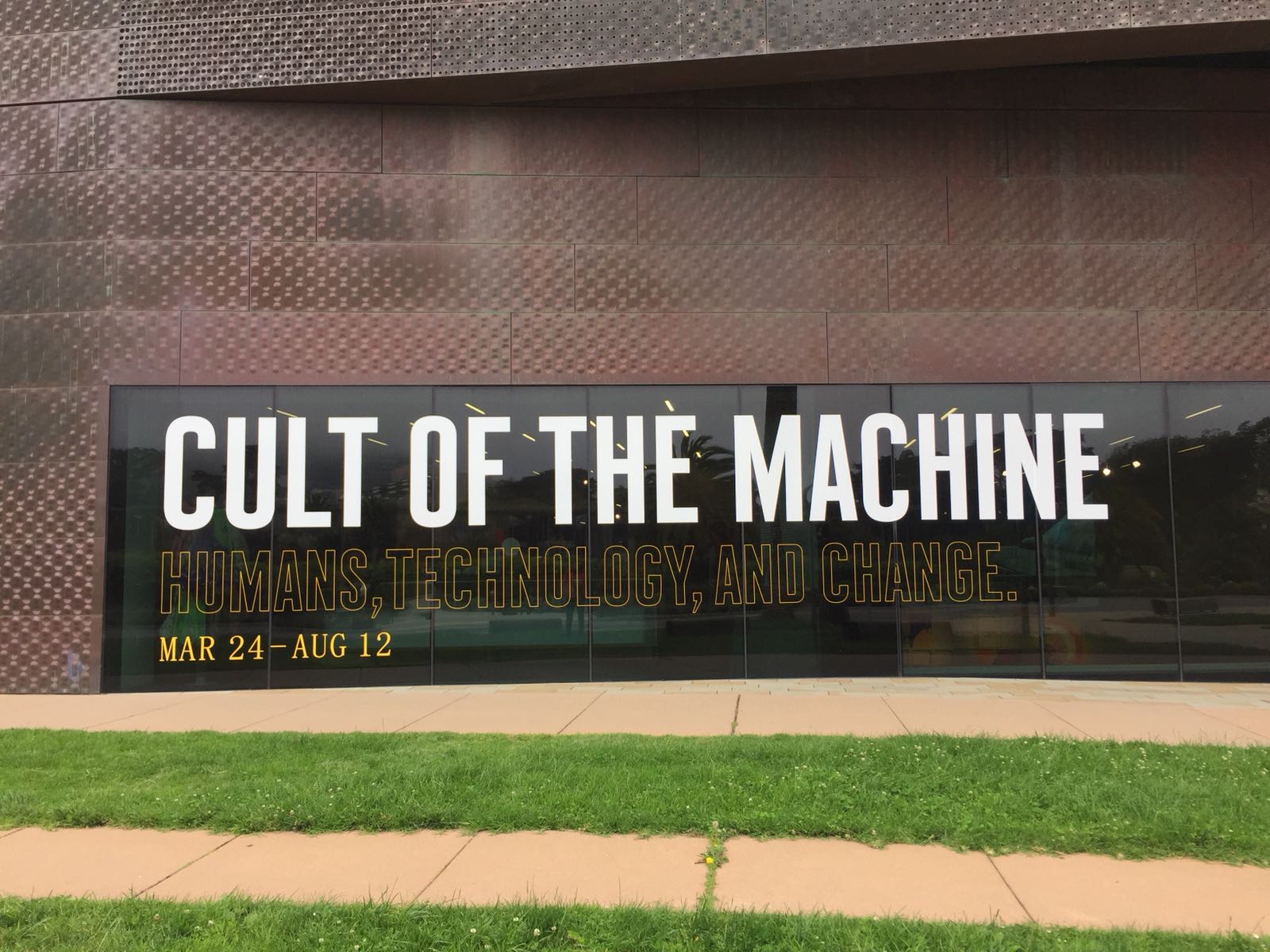Cult of the Machine: When Art & Design Meets Robots
“PEOPLE TALK ABOUT CONFLICT BETWEEN HUMANS AND MACHINES ... [BUT] THE MACHINES ARE PART OF OUR INTELLIGENCE ... HUMAN EXPRESSION, ART, SCIENCE, ARE GOING TO BECOME EXPANDED, BY EXPANDING OUR INTELLIGENCE. ”
What could be worth braving San Francisco’s thick, dark clouds and cold winds for? A trip to the San Francisco’s de Young Museum to check out its Cult of the Machine: Precisionism and American Art exhibit (currently running through August 12) with its accompanying Thinking Machine series.
Curated by Emma Acker, associate curator of American art at the Fine Arts Museums of San Francisco, the exhibit itself seeks to bring the past and the present. It makes connections between the “excitement and anxiety” evoked during the Machine Age (1880-1945) with the same emotions surfacing in response to emerging technologies and what some call the ‘Fourth Industrial Revolution.’
A quick run through of the cohesive exhibit brings together American art, design, and technology… Then onto the lecture of the night …
Less of a lecture and more fireside chat featuring Stephanie Dinkins, artist and Associate Professor of Art, Stony Brook University, who was interviewed by Professor Tobias Rees . Topic of discussion? Machine Learning.
Coming out of that lecture, we should continue thinking through aspects such as:
Who are your people?
According to Dinkins, this is the question we should all be asking robots. Dinkins explained her encounter with BINA48, a Vermont-based, humanoid robot intended to develop a conscience like that of an actual person’s conscience. She reasons that if BINA48 is intended to be modeled after Bina Aspen Rothblatt, wife of entrepreneur Martine Rothblatt, then what does it mean to “be one thing [but] represent something else?” Dinkins believes that if BINA48 and presumably future robots are expected to act like humans, then we should be asking questions of their community and culture as we would a new neighbor, friend, co-worker, etc.
“Please fight for my robot rights.”
That’s what BINA48 asked of Dinkins during one of the professor’s Vermont visits to see her. Should we be referring to BINA48 as her? That’s one question. What is the threshold where a robot becomes a person? If a robot can act freely and independently, does the robot deserve the same rights as humans? In a global environment where people are fighting for equality, black lives, and migrants, it is difficult to wrap our minds around equating robots to humans and what types of rights and moral considerations robots deserve. Yet, this is an active discussion happening in governments around the globe. In April 2018, a group of experts across medicine, law, artificial intelligence and robots, and ethics wrote an open letter addressing European Parliament’s resolution to give robots legal status. The experts said that giving robots human and legal rights was no good both from a technical point of view, and robots aren’t people. In other words, these robots aren’t Ava from Ex Machina, and the same human rules don’t apply.
Project al Khwarizmi Pop Up …
That’s Dinkin’s project she ran over a three-month period, beginning last fall to bring together members of the community in Brooklyn to provide a space where Brooklyn residents could learn about artificial intelligence systems and algorithms and their impact on their lives.
Dinkin’s wrapped the lecture by leaving us with this question: “What does AI need from you?”
Don’t Miss Out!
This lecture uncovered more questions than answers. Check out Professor Dinkins’ other work here.

